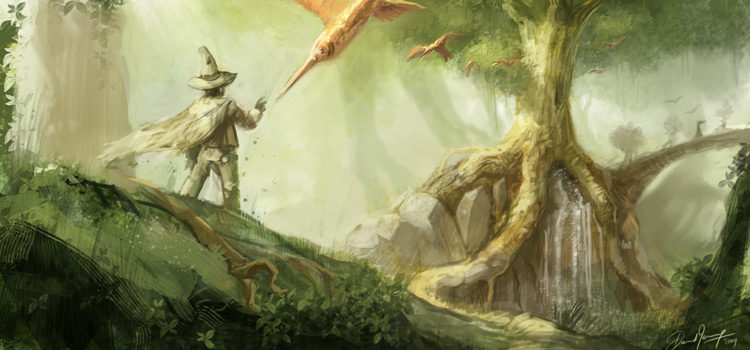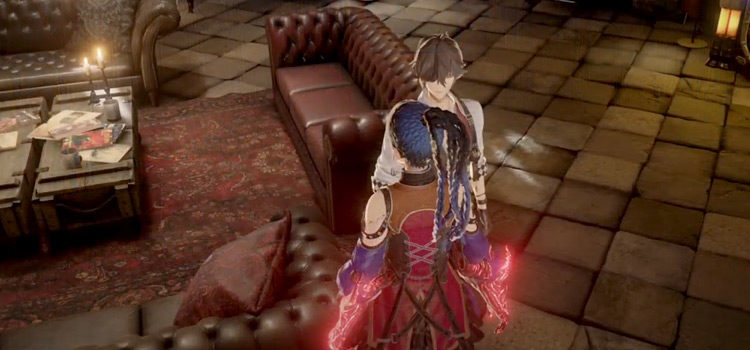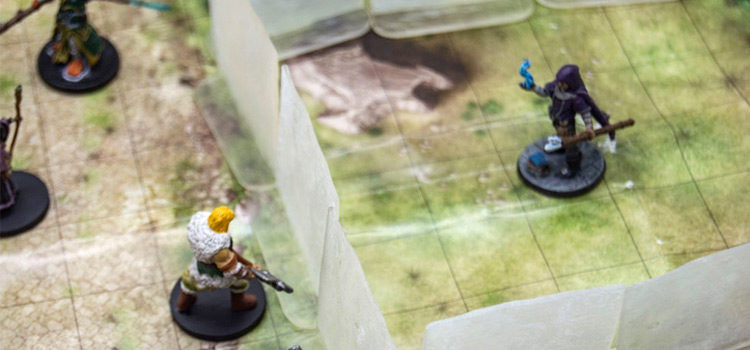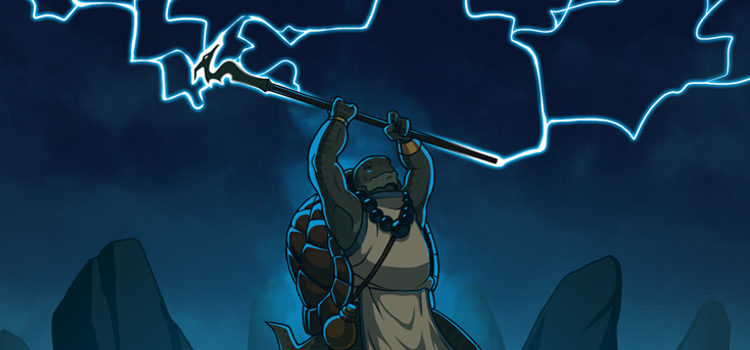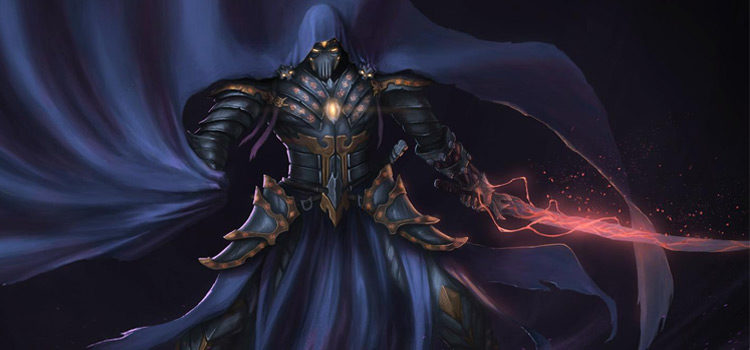What is a Cantrip? (D&D 5e Guide)
This post may contain affiliate links. If you buy something we may get a small commission at no extra cost to you. (Learn more).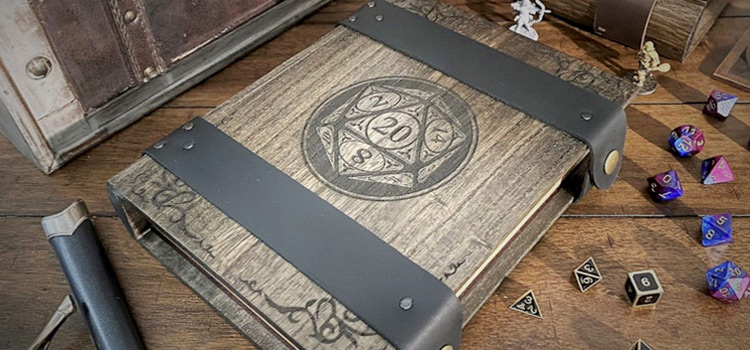
There are many levels of magic in D&D5e, with a cantrip being the lowest.
Whereas higher level spells might be summoning miniature suns to blaze through your opponents, a cantrip would be lighting a match. They are much easier to cast, easier to learn, and typically the most common uses of your classes magic.
Cantrips are a form of magic that your character has probably spent hours practicing and perfecting. It’s small magic that can be cast without much effort (and even better, without spell slots).
Typically they’re small effects like generating an orb of light, a puff of smoke, or a puddle of acid. But don’t underestimate their impact.
With creativity and a good roll cantrips can be game changing.
But we’ll get to that later, firstly how can you get one?
How To Get Your First Cantrip
Good news! It’s very easy, in fact it’s one of the first steps to creating a character.
Any character that can cast from level one will have access to cantrips (those being Artificers, Bards, Clerics, Druids, Rangers, Sorcerers, Warlocks, and Wizards… so a fair chunk of the playable classes).
Some cantrips are class specific, like Thaumaturgy (a Cleric cantrip). And each class handles cantrips a bit differently.
But the general idea stays the same: it is the smallest, most common application of your magic.
Wizards, for example, get to choose 3 cantrips at first level. If you’re curious how you would know this, open your players hand book to your class page, and if you’re a caster look for something that looks like the table below:
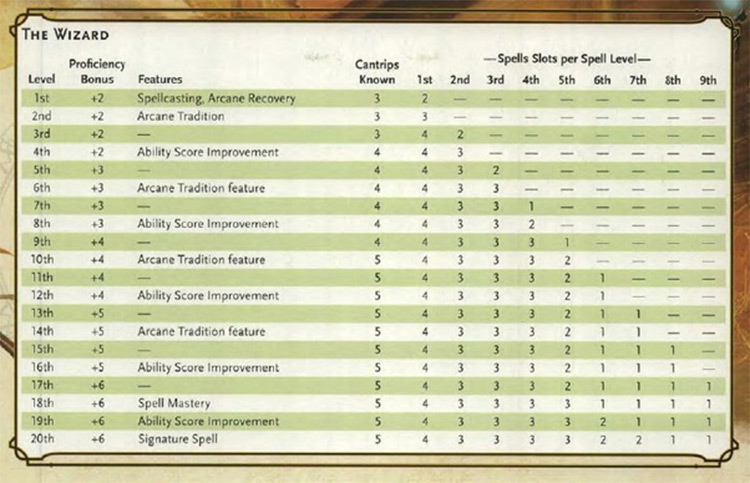
This is a handy table that walks you through your class traits as you level up, and lets you know what your spell slots are at a glance.
Very simply, spell slots are your magical energy. And you use them to cast spells of a specific level (first level spell slot = first level spell etc.).
One of the biggest perks of cantrips is that you can cast them without using any spell slots, so you can cast them as much as you want.
And like spells, cantrips can be learned through play. But unlike spells, you automatically learn cantrips as you level up.
Which Cantrips Should I Take?
This is highly dependent on what sort of game your DM intends to play. Combat oriented cantrips are usually pretty bad, but can be lifesavers in a pinch. Especially if you’re a wizard with no other way to deal that d10 damage.
Check out this page for an exhaustive list, but here are my top picks for any class.
Firebolt
Honestly I usually don’t recommend a combat cantrip. If things get bad enough to the point where a damaging cantrip is your best option you’re probably dead anyway.
However, the capacity to set things on fire should never be overlooked.
But keep in mind it cannot set things aflame that are being ‘carried’ (i.e, clothes, bags, etc.)
Mage Hand
The number of times you need to grab or interact with something out of reach… well, I couldn’t count it on two hands.
So take a third, detached, spectral hand the size of a small dog!
It is an incredibly handy ability, even if it can only move up to ten pounds.
Prestidigitation
This is the holy grail of cantrips. It’s your basic magical get out of jail free card.
Basically any small sensory change, or anything that can be explained through “well, magic”.
You can fabricate a non-magical trinket, then change the color, temperature, relative dampness, taste, and smell of that trinket. Or anything else you please.
In the hands of a creative mage, cantrips can ruin campaigns.
Imagine your party is trying to fake their way into a royal ball, fabricate an invitation with the king’s crest on it, pass a deception check and you’re in! Pass an intelligence check and fabricate a copy of the guards key, medieval locks really aren’t that complex. Change the color of brick to leave messages, or completely disguise the taste of poison in mead.
The world is in your small, scrawny little mage hands.
How Do I Cast A Cantrip?
There are many moving pieces when casting, and this is often the most confusing part of casting as a beginner.
We’ll go through the cantrip Dancing Lights as an example:
Dancing Lights:
Evocation cantrip
Casting Time: 1 action
Range: 120 feet
Components: V, S, M (a bit of phosphorus or wychwood, or a glowworm)
Duration: Concentration, up to 1 minute
You create up to four torch-sized lights within range, making them appear as torches, lanterns, or glowing orbs that hover in the air for the duration. You can also combine the four lights into one glowing vaguely humanoid form of Medium size. Whichever form you choose, each light sheds dim light in a 10-foot radius.
As a bonus action on your turn, you can move the lights up to 60 feet to a new spot within range. A light must be within 20 feet of another light created by this spell, and a light winks out if it exceeds the spell’s range.
This is a copy of what the Players Handbook (PHB) has down for the cantrip Dancing Lights. It shows you everything you need to successfully cast the spell, as well as what it does.
First, Casting time.
Casting Time
This really only applies to combat, so to understand that you first have to understand the combat structure of D&D5e.
Put simply, you have three phases of combat: your action, your bonus action, and your movement.
Actions are big like swinging a sword, persuading someone, or casting a spell. Bonus actions are much smaller: pulling a lever, sheathing a sword, and even some cantrips. Movement is movement, as detailed by your character’s race, usually it’s thirty feet per turn.
Components
The components are often abbreviated for the sake of space.
V means verbal, so you have to be making noise to cast the spell, and the noise (if heard) implies that something magical is happening.
S stands for somatic, which is a fancy way of saying choreographed movement, again implying something magical.
M, for material, is a special case.
If your class gives you something called an arcane focus (something that you would channel your magic through), or if you have a materials pouch you don’t have to worry about materials unless they have a gold price by it (which would appear next to M).
So, let’s say your mage has an arcane focus in the form of an orb, and casts Dancing Lights no problem. They would still fail to cast the ninth level spell True Resurrection unless they had a diamond worth at least twenty five thousand gold pieces on them, and a ninth level spell slot.
Duration
Duration is usually pretty simple. It’s the time the spell stays active.
However, if it says concentration that’s a separate deal. You can only have one concentration spell running at a time. Dancing Lights is no exception, it does not take a lot of concentration, you can walk and talk and cast non concentration spells.
But the effort is too much to have multiple concentration spells going at the same time.
If that’s confusing, imagine constantly repeating the spell’s name in your head to keep the spell active, and you’ll have a pretty good idea of what concentration is like.
Taking damage can also affect your concentration, and force you to make a concentration save (d20+ your constitution modifier).
So assuming your character has an arcane focus, or a materials pouch, or a bit of phosphorus or wychwood, or a glowworm, and you have a half second to mutter the spell’s incantation and dash a rune in the air… then four globes of light would spring to life around you.
Why Would I Use Cantrips?
There are plenty of reasons, the foremost being roleplaying.
It’s easy to forget, but most spell casters have lived with magic their whole lives, so play that up!
Why use a tinderbox to light a fire when Control Flames or Fire Bolt exist?
Plus, many leveled spells have worse cantrip counterparts that can (and should) be used more frequently.
Bards have access to the cantrip Friends which essentially doubles their chance at success with charisma checks. But after a minute the recipient knows they’ve been charmed.
What an opportunity to show what your character’s all about, and that they don’t care if the shopkeep knows they’ve been manipulated if it means a better deal.
Or maybe they do care. Regardless, cantrips can open the door to those conversations.
D&D is a system crammed full of magic.
Cantrips are an easy way to interact with that magic and add an extra layer to your sessions at any level.

